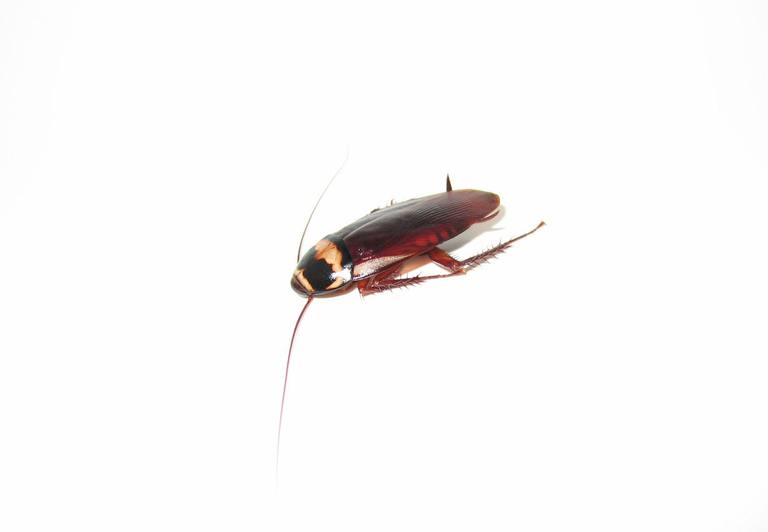Palmetto Bugs: What You Need to Know
Published: September 17, 2024

Introduction
Palmetto bugs are more than just a creepy-crawly nuisance—they’re a common invader in warm, humid regions like Florida and Texas. Often mistaken for other large roaches, these pests can startle even the bravest homeowner. Knowing how to identify, prevent, and treat a palmetto bug infestation is key to maintaining a safe, clean living space. In this guide, we’ll break down everything you need to know about palmetto bugs, their behavior, and how to keep them out of your home for good.
What Are Palmetto Bugs?
Palmetto bugs is a colloquial name typically used to refer to the American cockroach (Periplaneta americana). These large insects can grow up to three inches long and are recognizable by their reddish-brown color and the pale, yellowish band behind their head. Though the name "palmetto bug" may sound less threatening, these pests are indeed cockroaches—and they bring many of the same concerns.
According to experts at the University of Georgia's Cooperative Extension, the term “palmetto bug” is often used in the southeastern United States as a euphemism to make these giant roaches sound more palatable. Regardless of the name, their presence indoors is not something to take lightly.

Palmetto Bug Behavior and Habitats
How Do Palmetto Bugs Behave?
They are nocturnal and highly mobile. At night, they emerge to scavenge for food and water, which means their daytime hiding spots often go unnoticed. They can fly short distances and are excellent climbers, often seen scaling walls or flying when disturbed.
Because they can flatten their bodies to squeeze through tight spaces, it only takes a small crack or crevice for them to make their way inside. This behavior makes exclusion and sanitation key aspects of prevention.
Where Do Palmetto Bugs Live?
Outdoors, palmetto bugs prefer damp, dark environments like:
- Decaying leaf litter
- Mulch beds
- Tree bark
- Sewers and storm drains
Indoors, their preferred environments mimic their natural habitats. You’ll commonly find them in:
- Kitchens: Food particles and moisture from sinks and dishwashers make kitchens highly attractive.
- Bathrooms: Leaky pipes and humid air offer ideal hiding and breeding areas.
- Laundry Rooms: Warmth and water sources are a big draw.
Though many homes in Southwest Florida and Houston, TX don’t have basements, other enclosed spaces like crawlspaces and garages often serve as equivalent harborage areas.
Why You’re Seeing Palmetto Bugs in Your Home
Finding palmetto bugs indoors usually signals that some environmental factors are supporting their intrusion. Here’s what their presence could mean:
1. Moisture Problems
Palmetto bugs require moisture to survive. Leaky faucets, air conditioning units, or poor drainage around the home can create ideal conditions for them to thrive.
2. Abundant Food Sources
Even a few crumbs on the floor or dirty dishes in the sink can draw palmetto bugs into your kitchen. Pet food left out overnight is another overlooked attractant.
3. Entry Points in the Home
Tiny cracks in walls, gaps under doors, or poorly sealed windows offer palmetto bugs easy access to the interior of your home. Even vents and plumbing penetrations can serve as entryways.
For a deeper dive into their habits and how to manage them, refer to the University of Florida's IFAS Extension guide.

How to Prevent a Palmetto Bug Infestation
1. Reduce Moisture Throughout the Home
- Repair all leaky pipes, especially under sinks and in laundry rooms.
- Use dehumidifiers in damp areas, particularly bathrooms and garages.
- Improve ventilation in crawlspaces, attics, and bathrooms.
2. Eliminate Food Sources
- Clean countertops daily and sweep floors regularly.
- Store dry goods in airtight containers.
- Take out the garbage frequently and keep bins tightly sealed.
- Avoid leaving pet food out overnight.
3. Seal Entry Points
- Apply caulk to cracks around windows, doors, and foundations.
- Install weather stripping and door sweeps to block gaps.
- Inspect and cover vents with fine mesh.
- Use expanding foam to seal around pipes and wiring entry points.
Spotlight: Palmetto Bugs in Florida and Texas Homes
Why Palmetto Bugs Love the Florida and Texas Climates
Florida’s and Houston’s humid climates and abundant vegetation make both regions hotspots for palmetto bugs. These roaches thrive in environments with high humidity and organic debris—exactly what’s found in many Southern landscapes. Combined with year-round warmth, homes in these regions become ideal habitats unless proactive steps are taken.
Whether you're in Fort Myers or Houston, regular pest inspections and a solid prevention strategy are key to keeping palmetto bugs out.
Dealing With an Infestation
DIY vs. Professional Pest Control
While store-bought sprays and traps can reduce visible bug activity temporarily, they rarely address the root of the problem. Palmetto bugs reproduce rapidly and often nest in hidden or hard-to-access areas, making professional treatment far more effective for long-term control.
What Professional Services Offer
- Comprehensive Inspection
Identify infestation sources, entry points, and nesting areas. - Targeted Treatment Plans
Use of baits, growth regulators, and barrier applications customized to your home’s layout and infestation level. - Education and Prevention
Pest professionals will inform homeowners on best practices for long-term prevention, such as sealing entry points and reducing attractants. - Ongoing Maintenance
Scheduled follow-ups help ensure that palmetto bugs do not return.

Final Thoughts
Palmetto bugs may be a fact of life in humid regions, but that doesn’t mean you have to live with them. By understanding their behavior, monitoring for early signs of infestation, and enlisting professional help when needed, you can keep your home bug-free year-round.
If you’ve seen one too many palmetto bugs darting across the floor, now’s the time to act. Reach out to your local pest control experts for a thorough inspection and customized solution—whether you're in Florida or Houston, TX.